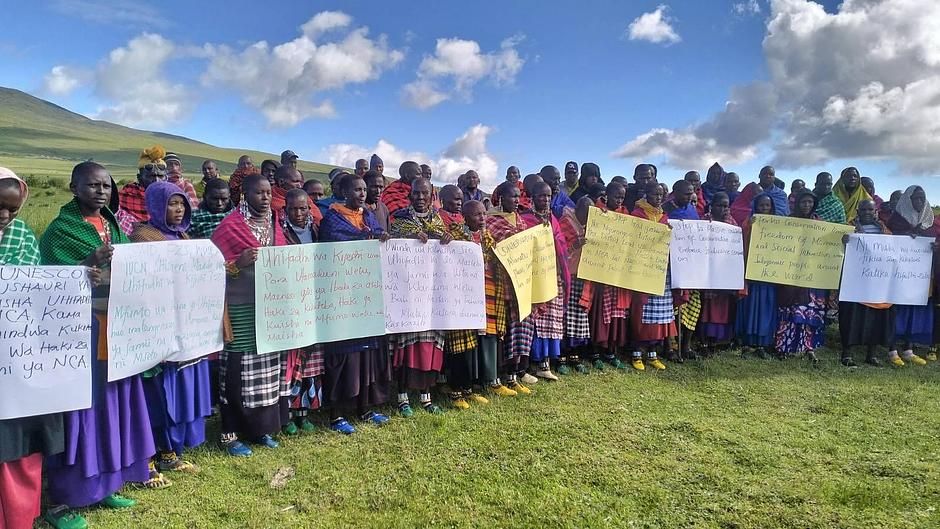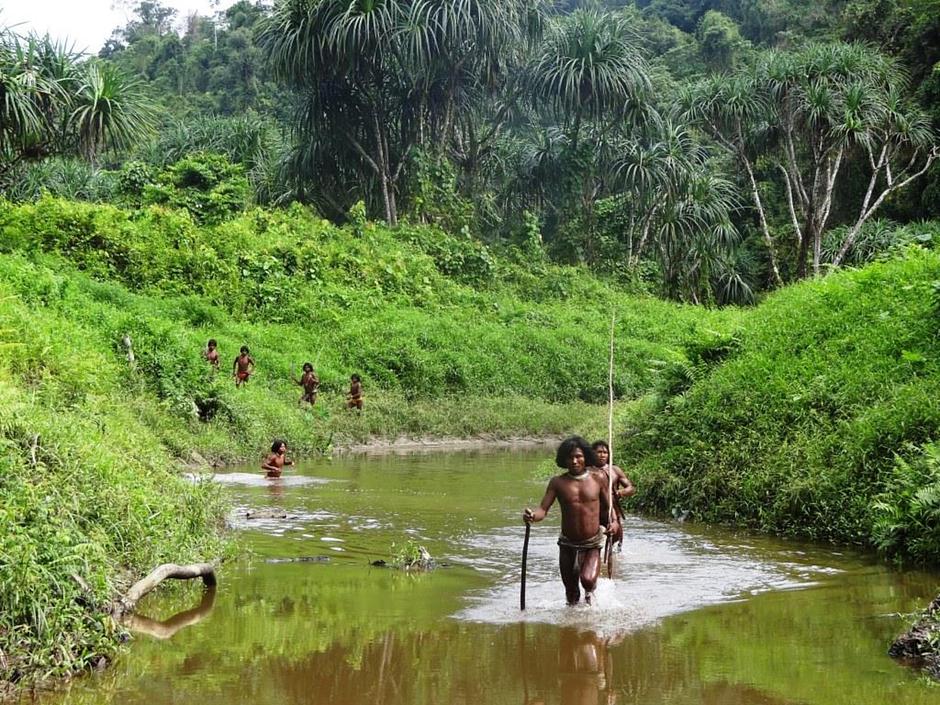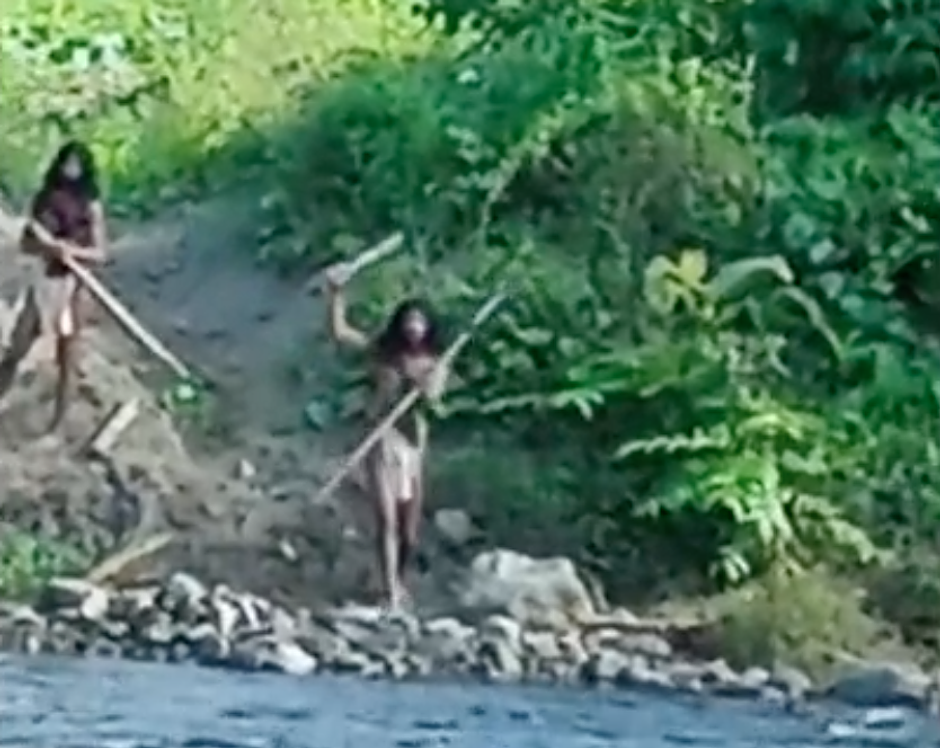50 fascinating facts from Indigenous and tribal peoples from around the world

Survival International was founded in 1969 to fight alongside Indigenous and tribal peoples to defend their lives and lands. There is nothing “primitive” about them, they just live differently. Tribal societies are extraordinarily diverse and there’s a lot to learn from them.
To celebrate half a century of worldwide solidarity, here are 50 facts for 50 years…

Two Karo boys above Ethiopia’s Omo River.
Tribal societies put the community before the individual, sharing and exchanging possessions rather than amassing personal wealth
- Money isn’t the key to happiness. A group of Maasai people from east Africa were found to have a similar life satisfaction rating to those on the Forbes 400 richest Americans list.
- Hunter-gatherer tribes spend far less time working than we do. The Cuiva people of Colombia and Venezuela “work” for only 15-20 hours a week and spend many hours each day in their hammocks, made extra large so that spouses and children can all get in together.
- Peace comes from dismissing concepts of ownership, competition, vanity and greed, according to the Piaroa people of Venezuela. They disavow violence, hold men and women to be of equal status, and never physically punish children.
- The Hadza people of Tanzania value equality highly and have no official leaders. For them it is a moral obligation to give what you have without expectation of return. If you have more personal possessions than you have immediate use for, you should share them.
- Yanomami hunters never eat their own catch. They give it away to others before they even bring it home. In turn, they only eat what the other hunters have given to them. Everyone eats something provided by someone else, fostering community spirit and cohesion.
Tribal societies possess an unparalleled understanding of some of the world’s most unique animals and ecosystems.
- Tribal peoples have unique relationships with animals. The Baka people of central Africa have more than 15 different words for “elephant” depending on the animal’s age, sex and temperament, and believe their ancestors walk with the animals through the forest.
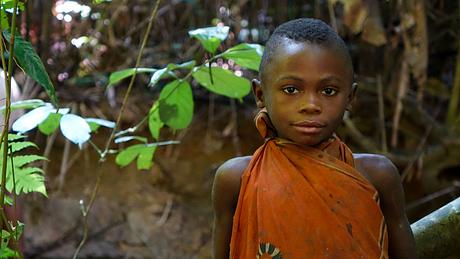 A Baka girl in Republic of Congo
A Baka girl in Republic of Congo - Evidence shows that the best barrier to deforestation in the Amazon is protecting the territories of uncontacted tribes. There are around 100 uncontacted tribes living in this rainforest and, as hunter-gatherers, they’re uniquely in tune with their environment and have vast botanical and zoological expertise.
- When they harvest honey from high in the trees, the Soliga people take some for themselves and leave some near the ground for tigers, who they consider family, because tigers cannot climb the trees and harvest honey for themselves.
- When a child is born to the Orang Rimba tribe of Indonesia, the umbilical cord is planted under a Sentubung tree. The child has a sacred bond with that tree for the rest of their life, and for the Orang Rimba, cutting down a “birth tree” is equivalent to murder.
Click here to support tribal and Indigenous peoples in conservation
- To plow land is to “scratch the breast” of Mother Earth, say India’s Baiga people, believing God created the forests to provide everything humans need and gave the Baiga wisdom to find it. Only people that God didn’t give this knowledge to must farm to survive.
- India’s Niyamgiri Hills soak up the monsoon’s rain, giving rise to more than a hundred perennial streams and rivers, including the Vamshadhara river. The Dongria Kondh tribe who inhabit this lush landscape call themselves “Jharnia”, meaning Protector of Streams.
 © Jason Taylor/Survival
© Jason Taylor/Survival - Unlike us, the Arhuaco people of Colombia’s Sierra Nevada take great responsibility for the wellbeing of the planet, seeing it as their job to keep Mother Earth in harmony. They see droughts and famines as a consequence of human failure to keep the world in balance.
Many tribal societies embrace gender equality; they show us that our society’s gender norms are not “natural” but culturally specific
- Women were traditionally the main breadwinners among the Chambri people of Papua New Guinea. They did all the fishing and took the extra fish they caught out into the surrounding hills to trade with other tribes. Neither sex is seen as dominant in Chambri life.
- Bayaka fathers spend approximately half the day near their babies. They even offer them a nipple to suck if the child is crying, and the mother or another woman is not available. It is not uncommon to wake in the night and hear a father singing to his child.
- Monogamy is not a universal human trait. The Zo’é people of the Amazon are polygamous, both men and women may have more than one partner. Everyone is equal in Zo’é society and traditionally there were no leaders. All wear the ‘m’berpót’ – a long wooden lip plug.
 A Zo’é family relaxes in a hammock they made from Brazil nut fibres.
A Zo’é family relaxes in a hammock they made from Brazil nut fibres. - Many Native American societies traditionally recognised three genders. The third gender, “Two Spirit”, was seen as blessed; possessing unique insight thanks to their understanding of both masculine and feminine perspectives.
- Women in industrial societies are still fighting for equality, but equal status of the sexes is normal for many hunter-gathers, like the Awá tribe in the Brazilian Amazon. Awá women participate in hunting trips and can even take several husbands.
Click here to support Brazil’s tribal and Indigenous peoples
- The level of power and independence enjoyed by the Innu women of Canada scandalized Catholic missionaries, who, up until the mid 20th century, tried to impose European standards, and make Innu women subservient to their husbands.
- Not everyone considers women’s breasts to be indecent; for many tribes they are unremarkable, and other body parts may be taboo instead. Emberá women in Colombia may go topless, but they must always cover the sides of their thighs.
- The Wodaabe people in northern Niger hold a male beauty contest every year at the end of the rainy season. Young men wear makeup, jewelry and their best clothes and line up to compete for the attention of the women.
Tribal societies have developed extraordinary expertise and unique technologies to live sustainably in some of the most challenging environments on the planet
- Many tribes around the world, like the Penan people of Sarawak, use clever chemistry to fish sustainably. They use toxins from plants to stun fish, which then float to the surface. People can take only what they need and allow the smaller fish to recover and swim away so fish stocks aren’t depleted.
- Special honeycomb is used to make casts for broken limbs by the Chenchu people of south-east India. They also say they never collect honey during the rains, because the bees will find it difficult to set up a new home while the rocks are slippery.
 Chenchu have a reciprocal relationship with the forest, based on the respect for cycles of the nature and in the responsibility for the future generations. Their customs dictate that they should never take more than they need or waste anything.
Chenchu have a reciprocal relationship with the forest, based on the respect for cycles of the nature and in the responsibility for the future generations. Their customs dictate that they should never take more than they need or waste anything. - Sirius is the brightest star in the sky and has a hidden partner. Sirius B is invisible to the naked eye and was only discovered by Western scientists in the 19th century. But it has been reported that the Dogon people of Mali may have known about the star before and understood its 50 year orbital period.
- Himba women of of Namibia and Angola cover themselves with otjize paste, a mixture of fat and ochre, cleansing to the skin and hair without water. Otjize also protects against the sun and mosquito bites, but the women say they just wear it to look good!
- A moon halo – a bright ring visible around the moon when there are ice crystals in the air – was used by Indigenous peoples all over Australia as a weather predictor. Australia was once populated by up to a million people who spoke over 250 languages.
- The spectacular Baliem Valley in West Papua is home to the Dani people, who are said to have developed agriculture at least 9,000 years ago, probably far in advance of Europe.
- The Guugu Ymithirr people of Australia traditionally had no words for left and right and only used North, South, East and West for direction. They oriented themselves instinctively, able to use each compass point accurately relative to where they were standing.
Click here to help Indigenous languages thrive
- The Jumma peoples of Bangladesh allow their precious land to recover by ‘shifting cultivation’; growing food in small parts of their territory, before moving on to another area. They put a mix of seeds in each hole for different crops in different seasons.
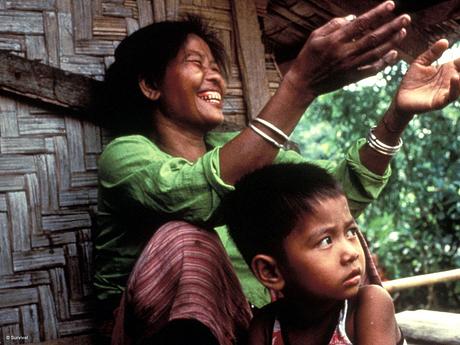 © Mark McEvoy/SurvivalMarma mother and son sitting outside their home. In the last 60 years, the Jumma tribes have gone from being practically the sole inhabitants of the Chittagong Hill Tracts to being almost outnumbered by settlers.
© Mark McEvoy/SurvivalMarma mother and son sitting outside their home. In the last 60 years, the Jumma tribes have gone from being practically the sole inhabitants of the Chittagong Hill Tracts to being almost outnumbered by settlers. - As a form of contraception, men from some tribes in West Papua have traditionally drunk a tea made from a plant called Gendarussa. Scientists are investigating whether the plant could provide the basis for a contraceptive pill for men.
- Malaria is one of the world’s most deadly diseases. Quinine, made from the bark of Cinchona trees, has been vital in the fight against it and was first used medicinally by Indigenous peoples like the Quechua of Peru, Bolivia and Ecuador as a muscle relaxant.
- Their understanding of their environment and ability to interpret natural phenomena saved the tribal peoples of the Andaman Islands from the devastation of the 2004 Asian Tsunami. There were over 200,000 deaths as a result of the tsunami, but no tribal people died.
They show us that the range of human ability, perception, and experience is so much broader than what exists in our society
- The Shipibo people of the Peruvian Amazon make intricate geometric art that can be read as music. The people can “hear” the song by looking at the patterns, like sheet music. The patterns represent chants and songs associated with Ayahasca healing ceremonies.
- The sea-faring Bajau people of Malaysia can hold their breath for up to 3 minutes and free-dive up to 20 meters. Scientists found that the Bajau are submerged for up to 60% of the time they spend in the water, which is nearly as long as a sea-otter.
- English is perhaps not such a difficult language to learn, it only uses around 42 different sounds. ǃXóõ, a language spoken by ‘Bushman’ tribes in the Kalahari Desert, has over 160. This includes five different “click” sounds originally found only in Bushman languages.
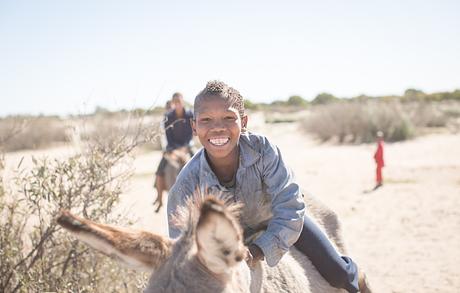 © SurvivalBotswana Bushmen, Kalahari, Kua tribe
© SurvivalBotswana Bushmen, Kalahari, Kua tribe - Many tribes use naturally-occurring psychoactive substances to sharpen their abilities, both mentally and physically. Matsés men and women often use frog poison before hunting trips to produce a feeling of clarity, vision and strength that can last for several days.
- In a harsh sub-polar climate with temperatures around freezing, the former Indigenous inhabitants of Tierra Del Fuego at the southernmost tip of Argentina could often go without clothes, slept outside, and swam in water cold enough to kill Europeans.
- The future is behind you and the past in front of you, according to Aymara people of the Andes. You can “see” the past, but you cannot see the future. The Aymara word for past literally means eye, sight or front, and the word for future means “behind” or “the back.”
- Are you at your mental peak at midnight? Sleeping all night just isn’t how everyone does it. The Pirahã people of Amazonas don’t just pass out for 8 hours at 11pm, they take naps at any time throughout the day or night.
- The Rarámuri people of Mexico developed a tradition of long-distance running, up to 200 miles at a time, for inter-village communication, transportation, and hunting. They live in challenging mountainous terrain with large distances between settlements.
- The Guarani language has two different words for “we”. One “we” includes the people you are talking to, a bit like saying “me and you”. The other, you use to talk about a group of people who are not present, kind of like “me and them”
 The Guarani use urucum dye of the annatto shrub to paint their faces and bodies during festivities, Brazil.
The Guarani use urucum dye of the annatto shrub to paint their faces and bodies during festivities, Brazil. - The Moken people of the Andaman Sea have remarkable visual skills. Their aquatic lifestyles mean they have developed the unique ability to focus under water in order to dive for food on the sea floor. Their sight is 50% more acute than Europeans’
- Have you ever been so excited to see someone, you keep going outside to check if they’ve arrived yet? The Inuktitut language of the Inuit has a word for that: “Iktsuarpok”, pronounced eekt-soo-ahh-pohk.
Tribal and Indigenous societies are a vital part of human diversity
- The most diverse place on Earth is the island of New Guinea, inhabited by around 1,000 or so different tribes. Though only about 0.1% of the world’s population lives here, it’s the home of approximately one seventh of the world’s 7,000 languages.
- There are 100 or so uncontacted tribes in South America and all of them live in the Amazon… except one. The Totobiegosode of Paraguay are a sub-group of the Ayoreo people and some of them have chosen to reject interaction with mainstream society.
Click here to support uncontacted tribes’ right to live as they want to
- Uncontacted tribes don’t necessarily want “our” way of life. In 2014, three uncontacted Awá people left the forest to engage with mainstream society. Unimpressed, two of them later returned to their forest, covering their tracks so they could not be followed.
- Colombia’s most recently contacted tribe, the Nukak, traditionally used piranha teeth to cut their hair. The tribe were uncontacted until 1988, when they turned up unexpectedly in a newly-established town inside the Nukak’s territory.
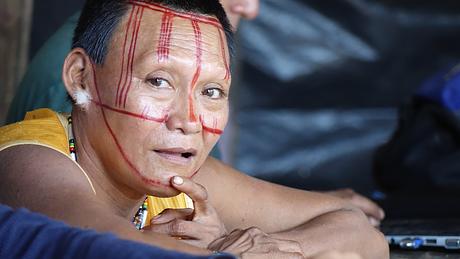
- Do you talk to your pets? The Bodi people of Ethiopia sing special poems to their favorite cows. The tribe are agro-pastoralists, whose livelihoods and culture revolve around their cattle.
- The Sentinelese people have likely been almost entirely isolated on their island for many centuries. Their nearest neighbors, the Jarawa, can’t understand the Sentinelese language, indicating these related groups must have been separated for hundreds of years.
- The Enawene Nawe tribe of Brazil practice one of the longest ritual celebrations on Earth, lasting over 4 months. They build intricate wooden dams across rivers to catch fish migrating from their spawning grounds. After the ritual ends, the dams are destroyed.
- As far as we know, the ancestors of today’s ‘Bushman’ tribes in southern Africa were in the region tens of thousands of years before anyone else. They have probably lived on their lands longer than anyone else has lived anywhere.
The world needs tribal societies and our work is helping to prevent their annihilation by the dominant society. We work in partnership with tribes and give them a platform to speak to the world, but we need your help to bring about radical change.
Join us now: For tribes, for nature, for all humanity



